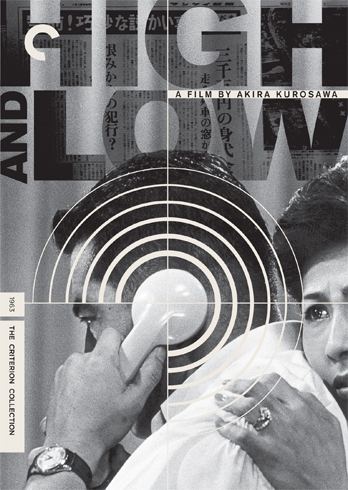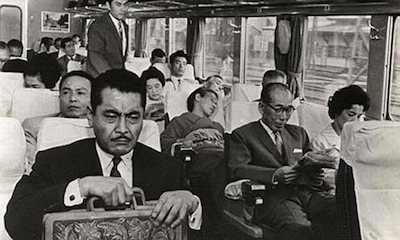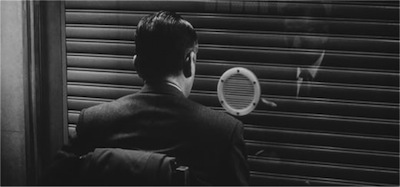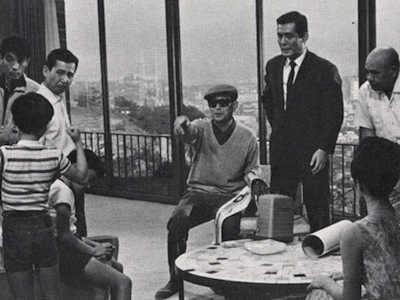
Akira Kurosawa did a variety of literary adaptations in his career, working with classic material from authors like Shakespeare, Dostoevsky, and Gogol in both historical and modern contexts, shifting their work into Japanese settings. One of his most successful adaptations, however, was from a more conventional, contemporary genre source, translating Ed McBain's 87th Precinct novel King's Ransom into the 1963 class drama High and Low. It's a structurally rigorous film, adopting the serious tone of a police procedural but finding deep wells of humanity along the investigative trail.
Kurosawa-mainstay Toshiro Mifune heads the cast of High and Low as Kingo Gondo, a wealthy shoe executive with a particularly ruthless way of getting things done. Though seemingly a man of privilege, Gondo comes from humble beginnings, and he actually cares about the quality of the product he makes. Shoes provide a foundation for everyday life; they carry our weight.
Gondo is in the midst of making a power play that will get him control of the company when an unexpected curveball gets lobbed through his front window. A phone call informs him that his son, Jun (Toshio Egi), has been kidnapped, and the kidnapper wants 30 million yen ransom. This is more than half of what Gondo needs to buy controlling shares in the shoe company, and he has mortgaged everything he owns to get it. While he wouldn't think twice about paying that and bankrupting himself for Jun, he hesitates when it's discovered that the kidnapper abducted the wrong boy. Jun swapped his sheriff outfit with his friend Shinichi (Masahiko Shimazu), the chauffeur's son, and so the crook got mixed up. It's a clever visual: a game of cops and robbers and switched identities, a rich boy and a poor boy, high and low.

The police are called in, and they come to the Gondo residence undercover. Led by the cool-headed Inspector Tokura (Tatsuya Nakadai), the small squad is intent on getting the child back alive, but they stay out of the internal drama that is boiling in the Gondo household. Gondo was banking on the kidnapper giving up after the mix-up was discovered, but the bad guy is intent on destroying the big man. From his phone calls, the police deduce that the kidnapper has some unhealthy obsession with the shoemaker. Gondo's house is on a big hill looking down on a less fortunate neighborhood, and the crook is somewhere below, watching the family through a telescope, aware of their every move.
This geographical conceit not only creates an appropriate metaphor for the difference between the classes, but also between the law and lawless. Two more of the many highs and lows in the movie. Gondo's state of being will go from one to the other, though as the man makes the right choices, he actually elevates himself rather than being brought down by tragedy. Naturally, he pays to ransom his servant's child. It comes at a great personal cost to himself, but such a sacrifice only backfires on his persecutor when the common populace venerate Gondo as a hero.

Kurosawa splits his film between the two locations, as well. The first half is "High," focusing on the negotiations in Gondo's house; the second is "Low," searching in the city streets, hunting the kidnapper. These halves are connected by the payoff and rescue. It's a pretty amazing gear shift. Gondo almost completely steps out of the picture once the police take over, and High and Low follows Tokura and his crew on every step of their investigation. The detecting is detailed, working piece after piece, until the puzzle begins to take shape. Kurosawa, who collaborated on the script with three other writers, also begins to give us peeks into the life of the kidnapper (Tsutomu Yamazaki), though withholding most of the details about his life until the investigators uncover his identity. These glimpses are there to show us the frustration he suffers at Gondo's lionization, and how some of Tokura's sneaky tactics are working.
While High and Low isn't exactly a nailbiter, Kurosawa does create a steady boil, leading the audience into a final sting that takes us into the darkest backstreets of Japan's underworld. "Dope Alley," where the junkies go to score and shoot, is like a more frightening and surreal version of the poverty and isolation the director portrayed in his Gogol adaptation, The Lower Depths. The kidnapper's true evil emerges as we witness his cold calculation and his disregard for human life. He is a coiled spring, thin and reptilian in appearance, his cold-blooded nature being a direct contrast to Gondo and, more to the point, Toshiro Mifune. The legendary Japanese actor has an unparalleled screen presence. Even in this less showy role, he commands every scene he is in, his bottled fury seeming more dangerous than any ticking time bomb could ever be.

And yet, Kurosawa carefully draws these two together, melding the high and low, revealing them as mirror images of one another--though the distorted reflections from a funhouse mirror. The pair only meet in two scenes. One is silent, and Gondo doesn't realize that the man in sunglasses asking him for a light is the one who tried to ruin his life. In some ways, the kidnapper has succeeded at this point, as they meet on his turf, down in the streets. Gondo is staring longingly at women's shoes in a shop window, his life's work separated from his reach by glass. When they meet again, however, the separation is now physically between them, and Kurosawa frames each side of their conversation so that we see the other's face superimposed on his doppelganger. Each is the ghost of his nemesis, never to quite come together, but yet somehow one and the same. Is it just the choices that each man has made that dictates what side of this divide they will be on? Throughout the film, expectations of class distinctions are flipped and subverted, so it's no longer as simple as financial indicators might otherwise suggest. Both have achieved infamy, and even criss-crossed in terms of who had money and who didn't, and yet they are never really in the same place at once.
There are so many great things about High and Low, it's impossible to touch on them all. For instance, the rescue of the kidnapped boy is a deftly paced caper set on a train, and surely has been studied by all filmmakers who have followed. (I kept thinking of Duncan Jones' Source Code [review].) There are neat little tidbits throughout the police investigation, including a surprising use of color to illuminate one of their successful devices. There are also all kinds of fascinating relationships--Gondo and his wife, Gondo and his chauffeur, the police and reporters, etc.--that shift throughout the story, adding more to the themes of social separation and how different factions can either work together or fall into chaos. How Kurosawa orchestrates all of these bodies is a tremendous thing to watch. Some of the interior scenes in Gondo's home, with action occurring on multiple levels, foreground and background, reminded me of how live television from the 1950s was put together, when directors like Sidney Lumet and John Frankenheimer had to work with a lot of actors in a limited stage space. Every actor has a purpose, and not a hair is out of place.

Kurosawa directing on the set of High & Low
Bottom line, High and Low is a rich narrative that is executed with extreme skill and endlessly rewarding, no matter how many times you view and re-view it. The Blu-Ray is technically Criterion's third release of the film, and as much as the 2008 edition that this version mirrors improved on the 1998 original, so too does the BD take it a step further. The high-definition restoration is astounding, with a wide image frame and beautiful rendering of the black-and-white photography. All previous extras are transferred over here, including the essential segment of the Japanese TV series It is Wonderful to Create, which regular Criterion consumers will recognize from previous entries in the Kurosawa oeuvre.
High and Low is among the best of the best, and its move to this new format only confirms its lasting power.

The original DVD cover
Please Note: The images used here are publicity stills, not screencaptures from the Blu-Ray.
This disc was provided by the Criterion Collection for purposes of review.

No comments:
Post a Comment